Photo


Robert Lapage, 887
One memory clings to another, and through the mouth of the same person (Lapage is not only the author of the play and director but also the only actor): the story of his family. He turns on the lights and so we find out that 887 is the house number on Murray Street, where his childhood passed, and we see this house: five floors, in miniature, and in the dark windows the lights turn on and small figures appear in turn, they move, and it seems that you are watching what is happening on several mini TV screens while Lepage talks about the inhabitants of each apartment, including dogs, unfaithful wives and a pianist, whose iteration of Chopin’s La Nocturne is the accompaniment to the key episodes of the performance.
All this is touching, and funny, and sometimes sad, and full of symbolism, and so masterly set that you immediately forget to even think about how everything is done, although the scenes are short, the visual component is different every time: a bar a bachelor apartment, a night street, a bed turned into a theatre of shadows, a house of wealthy relatives, and much more, but the transitions occur with incomprehensible smoothness. Lepage and his ‘factory of wonders’ Ex Machina are renowned for their virtuoso, finely honed engineering, which creates illusions from a mixture of real props, needlework and the latest technologies.
But there is no time to analyze tricks. You just follow this calm voice and get involved in this seemingly ordinary story, which for some reason starts to reopen our consciousness and soul. One more drama is woven into the story of parents, neighbours, memory-losing grandmother, childhood memories and shattered dreams, a colleague from television and attempts to learn a poem: Quebec, the escalation of the struggle for separation, which suddenly turns out to be very personal and universal for Lepage.
What remains of our memory? And why exactly do we hold on to some memories and let go of others? In the two hours of the play 887, Robert Lepage touches so many strings that the sound will reverberate for a long time.
0 notes
Photo
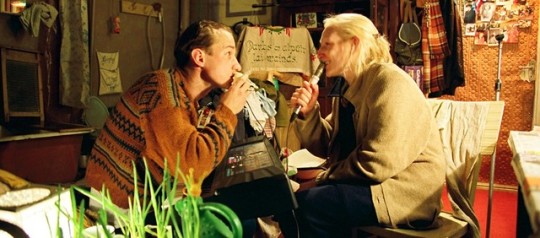
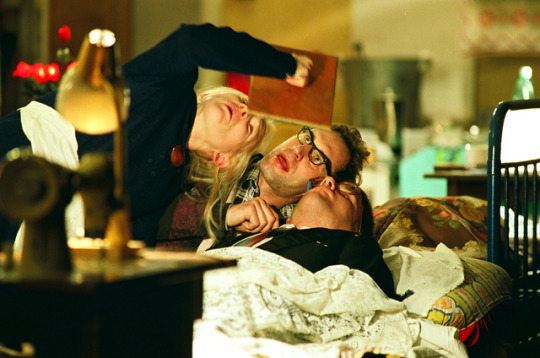

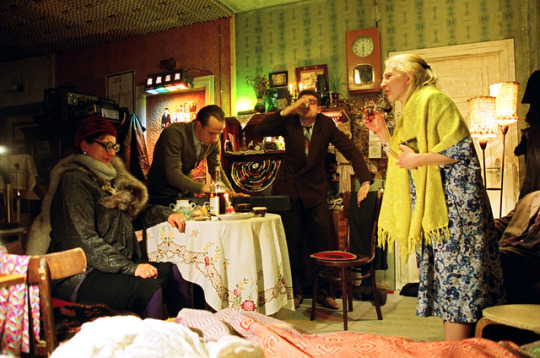
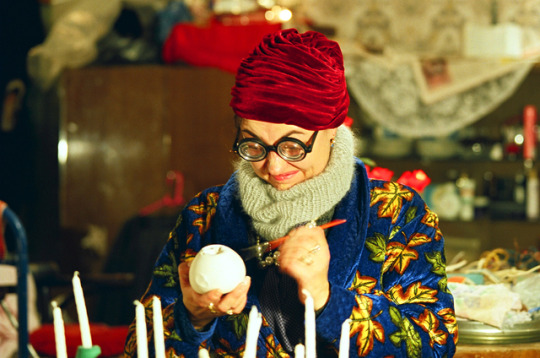
Alvis Hermanis, The Long Life
The theatre of Alvis Hermanis often passes into the realm of reality, entering the territory of real life and erasing the boundary between them.
‘Theatre has become too cynical lately, too focused on reason, dealing primarily with ideas, so the critics have something to analyze. At the moment, I’m mainly concerned with how to restore the relationship with the viewer at an emotional level. If I put an empty bottle of milk on the table which you recognize from your childhood, a shock will pass through you, it will awaken your memories, it will unlock your emotions.
Born in 1965, Hermanis graduated from the Lithuanian State Conservatory and played in theatres in Riga until 1990, after which he began to direct his own plays. He imposed a new theatrical poetics - sensitivity and emotion, alternated with irony and the grotesque, quickly becoming a favourite of his generation and the director of the New Theatre in Riga.
His characters are ordinary people in ordinary situations - for him, this says so much more about life than Shakespeare's tragedies where an exceptional person is placed in an exceptional situation. ‘I would have difficulty if I had to put an ancient Greek tragedy - I can hardly imagine how these people lived. The only thing I know about them is that they walked around wrapped in white sheets and this is definitely not enough information. In order to sink into a text, archaeological studies of the epoch, people and their way of life are needed.’
The play ‘Long Life’ affects the viewer without even a single word. There are only a few replies in the show, but they are all intangible. The story is about old age and growing old as a tragicomedy. Hermanis shares that when the show was first put on in Riga they invited retired people to see it, they were very entertained and finally agreed that old age can be funny.
In this show, five 30-year-old actors in the duration of an hour and a half turn into elderly people without the help of any makeup effects or costumes. The reincarnations are genius to the smallest detail - the lonely old man draining the last drop of the carton of milk, then putting a pan with a piece of fish on a gas stove and staring at the cup long enough for the audience to start worrying about him starting a fire.
Each of the actors has compiled the story of their character by watching the elderly around them. It is not difficult for the spectator to recognize these characters.
The scene is exactly sixteen steps long - the length of the abandoned house in Riga, whch was demolished by the municipality, where the screenwriter found the first prop for the play - a simple wooden table, roughly cut in half by an axe with a faded newspaper on top of it. Later, the objects used in the play start to slowly come together, rescued from the homes of deceased elderly people without heirs, whose belongings the municipality was willing to get rid of. In the end, the stage is overfilled with furniture, photographs, utensils and knick-knacks, which restore with a photographic accuracy to a past life. It has a specific smell - a mixture of camphor, medicines and soap.
So far, they have not been able to ventilate the theatres where we've been on for days."
In Long Life, the objects are the ones that speak, thanks to Hermanis' skill in discovering the essence under the banal surface - in one of the rooms there’s a Hemingway portrait, enshrined by lights, and next to him - a photo of the hostess as a young girl. The husband is absent in this scene; he is an insignificant detail in their long family life.
‘Long Life’ attacks memories - even the most painful ones, unearthing even those we’d like to hide and forget.
0 notes
Photo
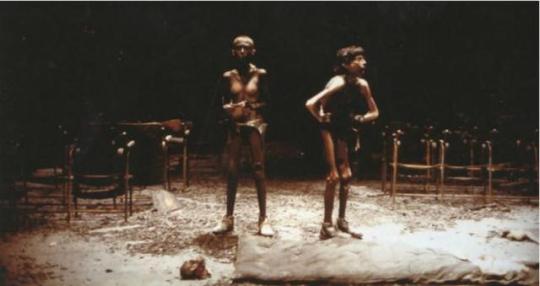

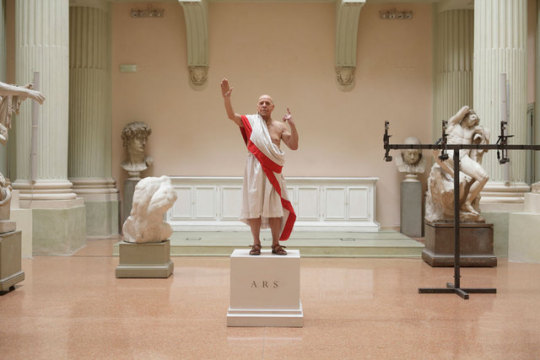
Romeo Castellucci, Julius Cesar
The festival will host the performance by the famous and scandalous Italian director Romeo Castellucci Julius Caesar. The performace will take place in a West End theatre, with all its pomp and beauty, with the aim to confuse or exacertbate expectations.
There are eight actors involved in the show: in the first act, the roles of Cassius and Brut are performed by men, and in the second act by women. Castellucci works under the laws of the magician who never give their secrets. And naturally looking for the effect of the shocking.
The bodies of almost all participants in the show carry the signs of a real illness or pain: Antony speaks with a metallic, due to an illness in his throat, Cicero is shown with an obese, almost motionless body and a quick rhetorical thought. The performer playing Brut is painfully thin, and the traces of her illness are highlighted by her body suit.
Each individual picture speaks of the magnitude of the imagination of the concept.
1 note
·
View note
Photo


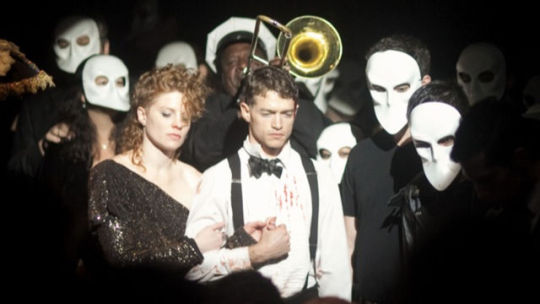
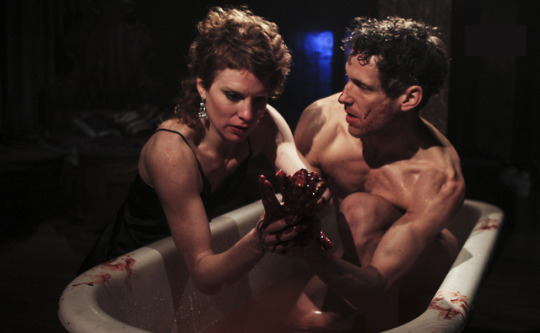
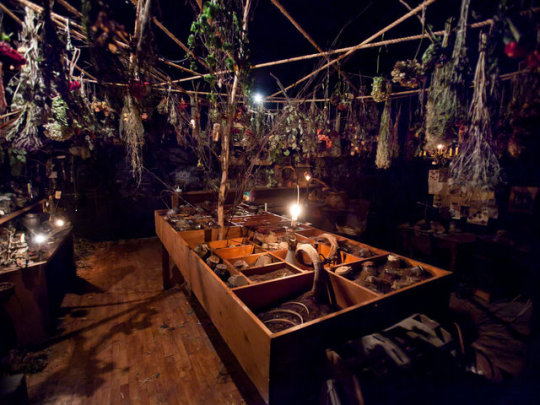
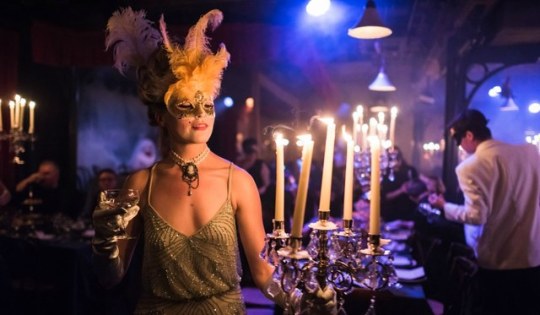
The Vanderlust, Sleep No More
Sleep No More is an interactive performance, which takes place in a fictional hotel in Mayfair. It’s a modernist view of the classic tragedy of Shakespeare’s Macbeth: the scene and the audience chairs are missing and instead in the numerous rooms of a five-story building various actions take place. Actors walk among the public, a scene can take place quite suddenly and on each of the five floors, there’s something going on at all times. The viewer, who finds themselves in a mysterious hotel, becomes a participant who has lost touch with reality.
The characters do not speak and instead, everything is expressed through dance. In the show, a few main characters tell their story. They quarrel, love each other, dance. During this time, you can visit the cemetery and the psychiatric hospital or become a witness to a sacrifice. Everything that happens is interconnected, and closer to the final, each viewer determines for himself the meaning of what he sees.
The performance takes place from 18:00 pm to 12:00 pm the next day. Every three hours a new group comes, so the viewers can decide if they want to stay longer and continue to explore the rooms of the hotel.
0 notes
Photo




Rimini Protokoll, Nachlass - Pièces sans personnes: How People Die and What They Leave Behind
The actors from the group Rimini Protokoll, who began to dive into simulated reality long ago, in the project “Property. Pieces without people ”(Nachlass. Pieces sans personnes) knock down the body's audio-visual settings without the use of gadgets and new technologies. The theme of the project, implemented in Switzerland (the concept of playwright Stefan Kagi and set designer Dominik Huber) is death itself. The study of this issue - how we leave and what we leave behind. It’s a play that cannot be activated without launching the viewer as an actor, as part of the game.
Eight real stories, eight testimonies of people caught between life and death. Entering into a hallway with a map of the earth that shows illuminated and extinguishing lights, simulating real-life statistics of human deaths every second. From there, the viewers can make their way to eight small rooms, accommodating from two to six people at a time. In each, they spend eight minutes - sometimes they stretch, sometimes they fly by instantly.
Unlike other projects of Rimini Protokoll in which they use real people, coming to the stage to show their real stories, here not people but their voices, images and objects are used as witnesses - some of them surviving their owner.
0 notes
Photo




Jan Fabre, Mount Olympus: A performance between dream and reality
In the show Olympus, contemporary artists appear as actors, dancers and athletes. The Belgian artist Jan Fabre, known for his revolutionary productions since 1982, takes the role of a screenwriter yet again. Over the last 10 years, Fabre has been focused on exhibiting his art, but now he’s returning to theatre for a few days - quite literary. The first performance of the play will take place from 20th May at 8:00 and finish on the 21st of May at the same time. There will be another two chances to see the play - on the 23rd and the 25th of May.
Together with 27 collaborators, Fabre has organised a performance marathon. According to the idea, performers must live, work, create and sleep on the stage for the duration of 24 hours. He promises to lead the viewer all over the world between dream and reality. The presentation is something like a modern version of ancient Greek myths.
Jan Faber is known for creating sculptures, drawings, canvases, shows and theatrical scenarios.
His first play took place in 1982 ‘This is the theatre as expected and planned’ and quickly gained the attention of the critics. Two years later, for the Venice Biennale, he created the production "The Power of the Theatrical Nonsense" - and once again conquered the public and the critics.
Over the past few years, Faber has put aside his theatre work and focused on exhibitions. But who knows, perhaps we will now witness a small artistic revolution not in the gallery but on the stage.
0 notes